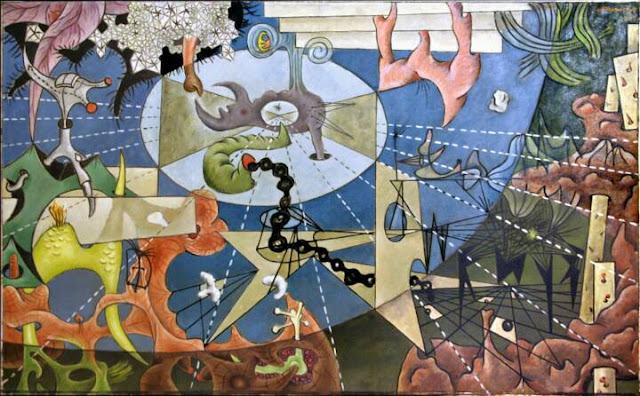This is part 2 of a 5-part post on the works of French artist
Fernand Léger (1881 – 1955).
For biographical notes and earlier works see part 1.
,+New+York+:+ADAGP,+Paris.jpg) |
| 1920 The Aviator oil on canvas 65 x 92 cm © Artists Rights Society (ARS), New York / ADAGP, Paris |
 |
| 1920 The Bridge of the Tug oil on canvas |
 |
| 1920 The Mechanic |
,+New+York+:+ADAGP,+Paris.jpg) |
| 1920 Three Women and Still Life oil on canvas 73 x 92cm © Artists Rights Society (ARS), New York / ADAGP, Paris |
 |
| 1920 Two Men ink on paper 32 x 23 cm |
 |
| c1920 Composition oil on canvas 60 x 73 cm |
 |
| 1921 Breakfast |
 |
| 1921 Still Life in the Tankard Final State |
+oil+on+canvas+191+x+99+cm.jpg) |
| 1921 Three Women (Le Grand Déjeuner) oil on canvas 191 x 99 cm |
 |
| 1921 Woman with a Cat oil on canvas 131 x 90 cm |
 |
| 1922 Still Life |
 |
| 1923 Study for "The Creation Of The Earth" watercolour and tempera on paper 49 x 63 cm |
 |
| 1923 The Great Tug oil on canvas |
 |
| 1923 Two Figures, Naked on Red Ground |
 |
| 1924-27 The Study for the City Centre |
 |
| 1924 Animated Landscape |
 |
| 1925 The Baluster |
 |
| 1926 Accordion |
 |
| 1927 Still Life, King of Diamonds oil on canvas 92 x 66 cm |
+oil+on+canvas+74+x+92+cm.JPG) |
| 1928 Still Life With Profile oil on canvas 74 x 92 cm |
 |
| 1930 Three Musicians |








+gouache+&+ink+on+paper+31+x+24+cm.jpg)






,+New+York+:+ADAGP,+Paris.jpg)




,+New+York+:+ADAGP,+Paris.jpg)






















